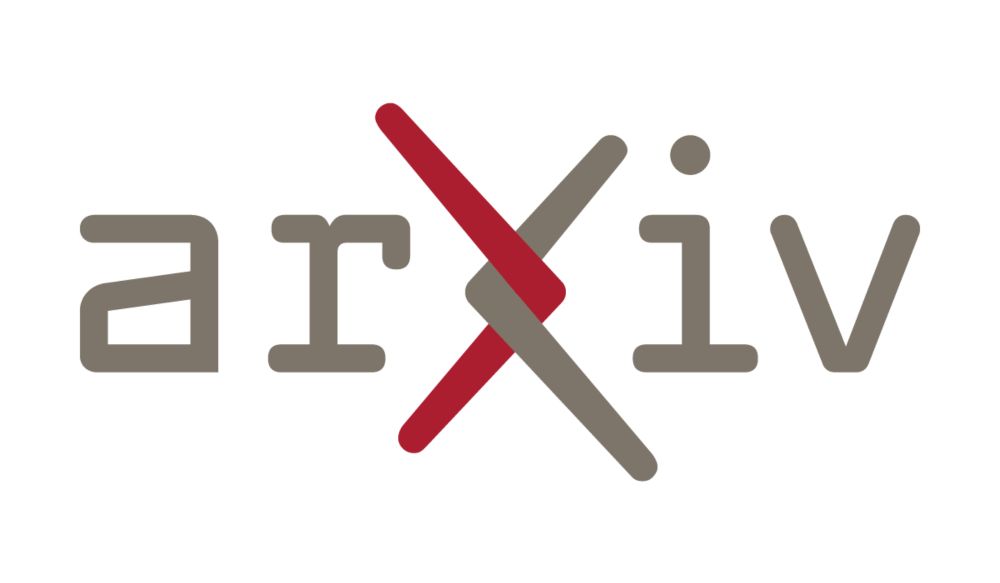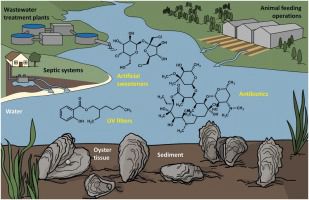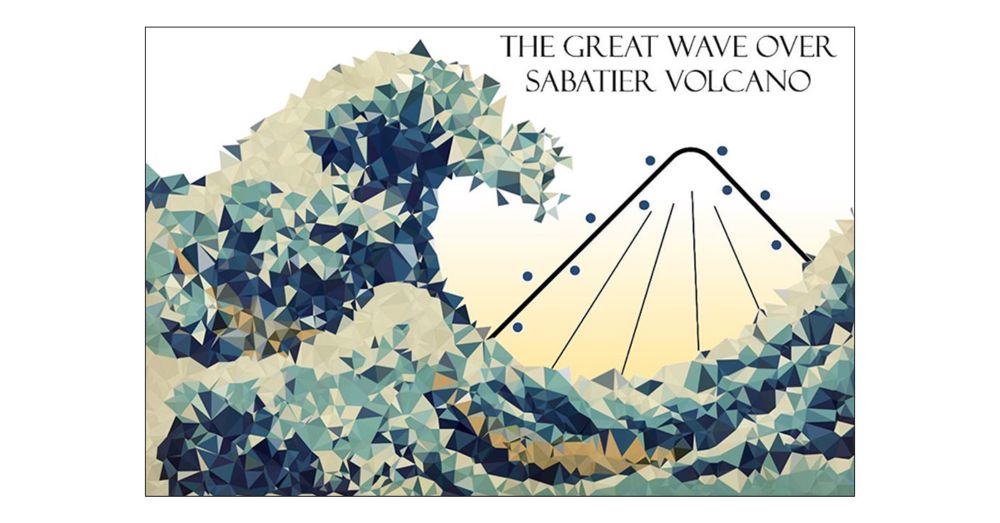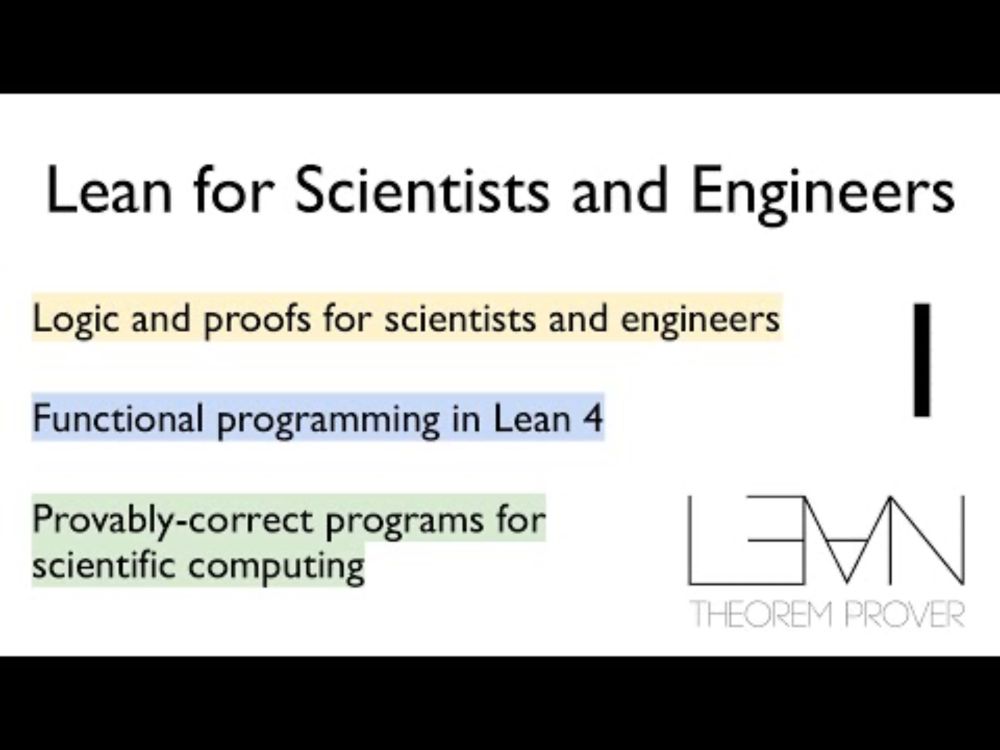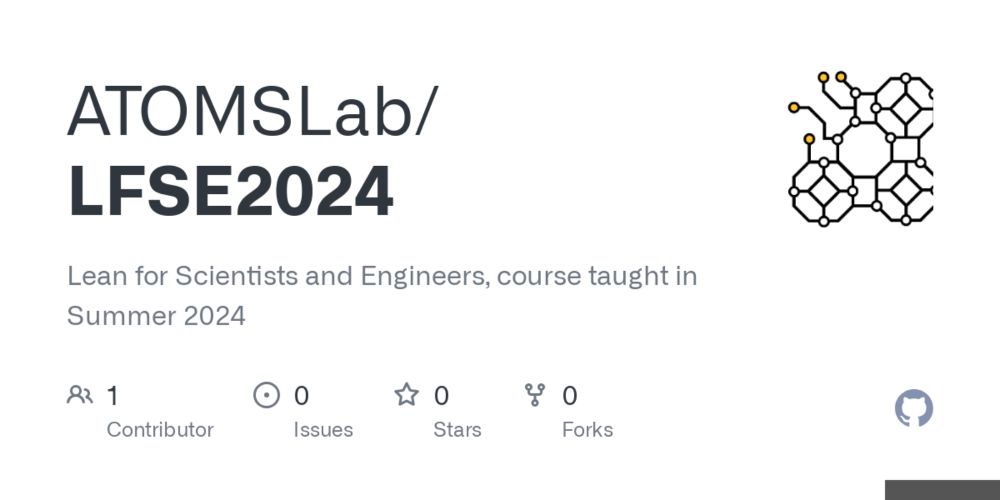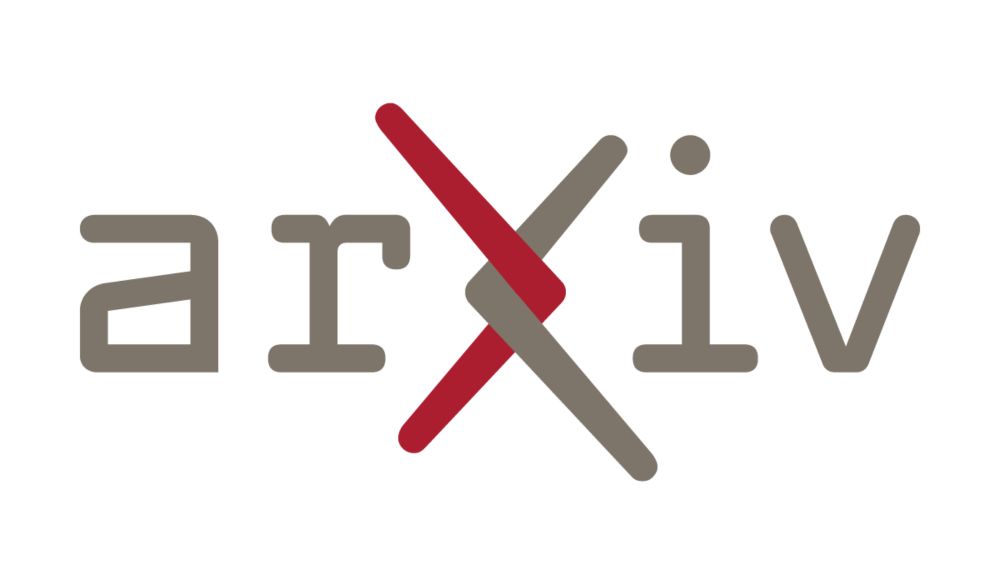3 Philosophers is my all time favorite! We keep a few in the house to celebrate new grants / papers.
08.08.2025 10:41 — 👍 1 🔁 0 💬 0 📌 0
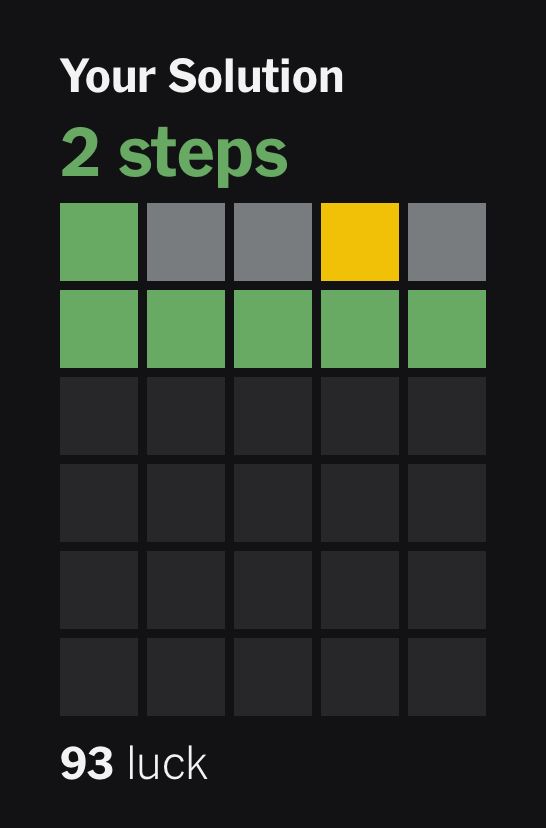
Haha, me too!
02.08.2025 14:53 — 👍 1 🔁 0 💬 0 📌 0
New paper: "Large Language Models and Emergence: A Complex Systems Perspective" (D. Krakauer, J. Krakauer, M. Mitchell).
We look at claims of "emergent capabilities" & "emergent intelligence" in LLMs from the perspective of what emergence means in complexity science.
arxiv.org/pdf/2506.11135
16.06.2025 13:15 — 👍 238 🔁 57 💬 6 📌 7
This has been a really fun project to work on! Having a great time building with an effective team!
04.04.2025 19:45 — 👍 2 🔁 0 💬 0 📌 0
I guess it’s not “Google-proof” after all
03.04.2025 11:15 — 👍 5 🔁 0 💬 0 📌 0
The multicomponent aspect is really interesting, I think. Sucralose is a strong signal for “came from cities/toilets” while other molecules may come from industrial, municipal, and/or agricultural sources.
14.03.2025 10:16 — 👍 2 🔁 0 💬 1 📌 0
That’s a decent description of Lean 3, but Lean 4 is a full-fledged functional programming language. It has lists, strings, I/O, floats, etc. - all useful for writing programs.
14.03.2025 01:23 — 👍 2 🔁 0 💬 0 📌 0
Ooh! My colleagues work on similar problems on the rivers flowing into the Chesapeake Bay. They also have the added questions of “which pollutants are coming from where?” and “where would be the best places to put multiple detectors?”
13.03.2025 01:57 — 👍 2 🔁 0 💬 1 📌 0
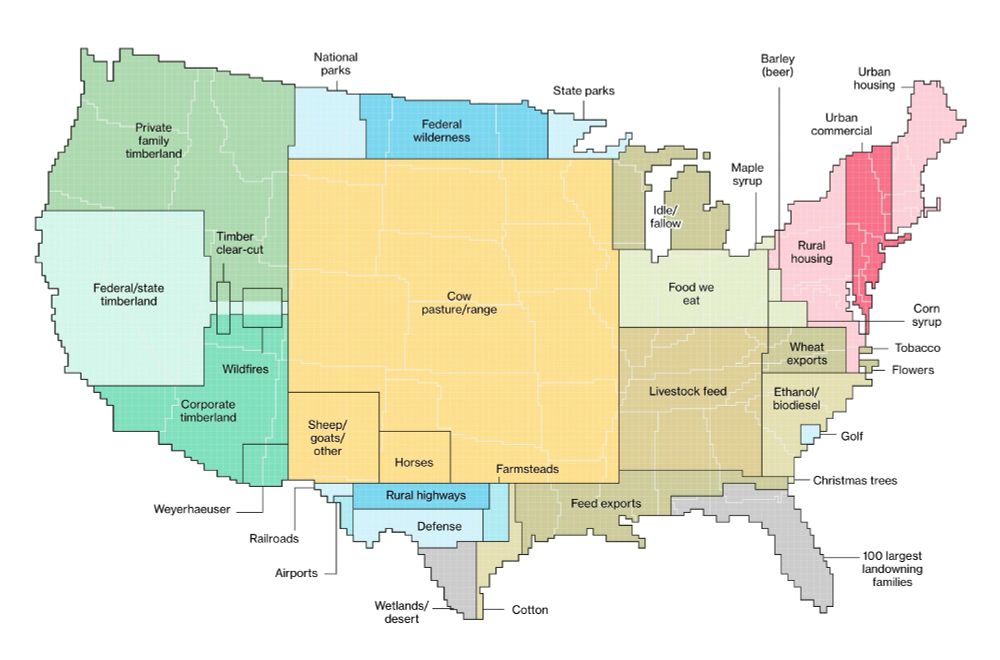
This is a cartogram map of the United States depicting land use by different categories. The map distorts state shapes to represent proportional land usage. Key land use types include cow pasture/range (covering much of the central U.S.), private and federal timberland in the Pacific Northwest, corporate timberland in the Southeast, and urban housing/commercial areas in the Northeast. Other categories include agriculture (livestock feed, wheat exports, ethanol/biodiesel, cotton), protected lands (national parks, federal wilderness, state parks), and infrastructure (railroads, airports, highways). Additional specialized land uses include wildfires, golf courses, Christmas tree farms, and maple syrup production.
I think about this map a lot.
www.bloomberg.com/graphics/201...
27.02.2025 17:26 — 👍 2774 🔁 665 💬 165 📌 140
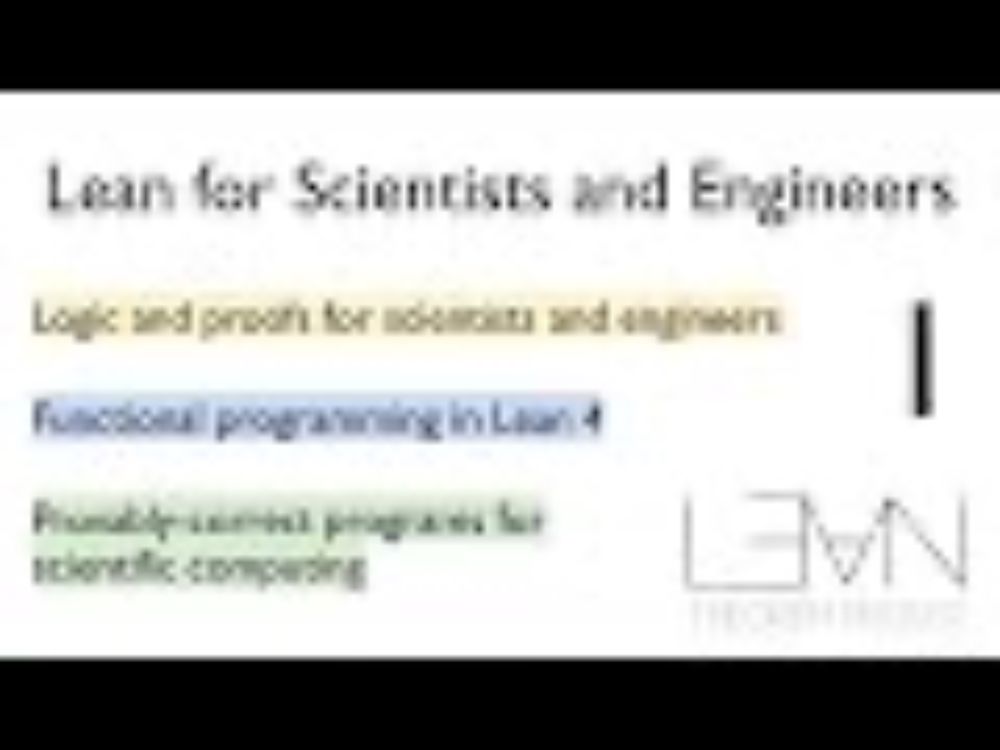
Lean for Scientists and Engineers 2024 - YouTube
Lean 4 is a programming language whose type system enables it to check complicated math proofs. This ~22-hour lecture series is an introduction to Lean for n...
Instead, could we validate the construction of math, scientific models, and software in one system? With Lean 4's ability to unify proofs and programs, we can! (This is from Lecture 3: check out the whole course here! youtube.com/playlist?lis...)
25.02.2025 16:17 — 👍 1 🔁 0 💬 0 📌 0
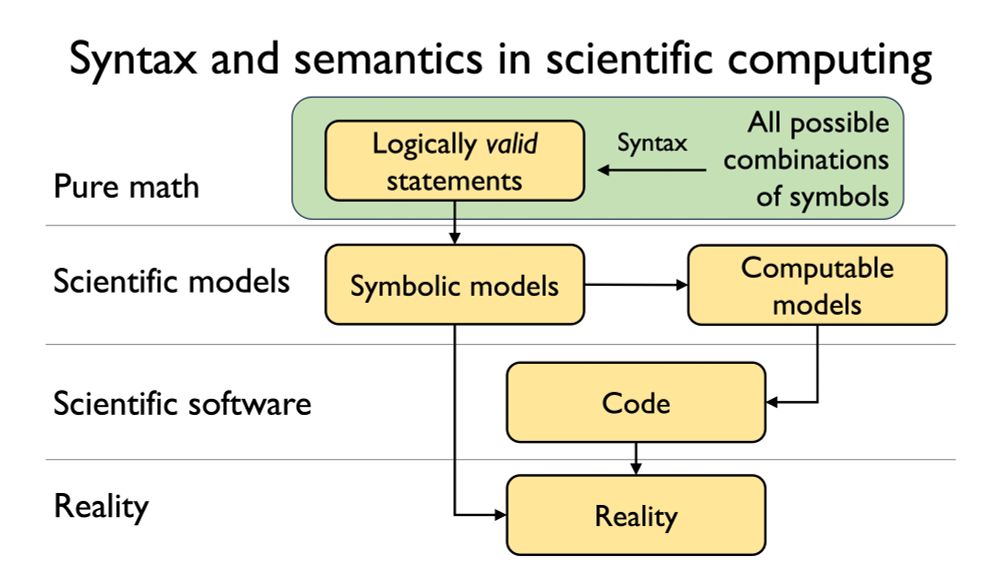
Flowchart illustrating relationship among pure math, scientific models, scientific software, and reality. In the realm of pure math, syntax separates logically valid statements from all possible combinations of symbolic. Logically valid statements bridge into symbolic scientific models, which also need to bridge to computable models. Computable models are implemented as code in scientific software, which finally bridges to reality. A final bridge does connect symbolic models directly to reality, but the main path is via computable models and code.
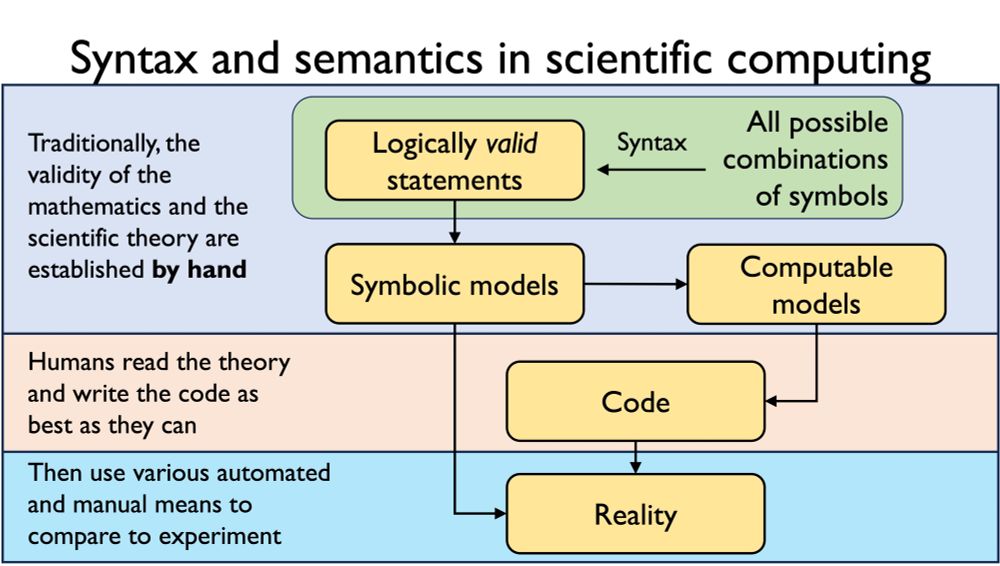
The previous chart, with three boxes overlaid. Traditionally, the validity of the mathematics and the scientific theory are established by hand. Humans read the theory and write the code as best as they can. Then use various automated and manual means to compare to experiment.
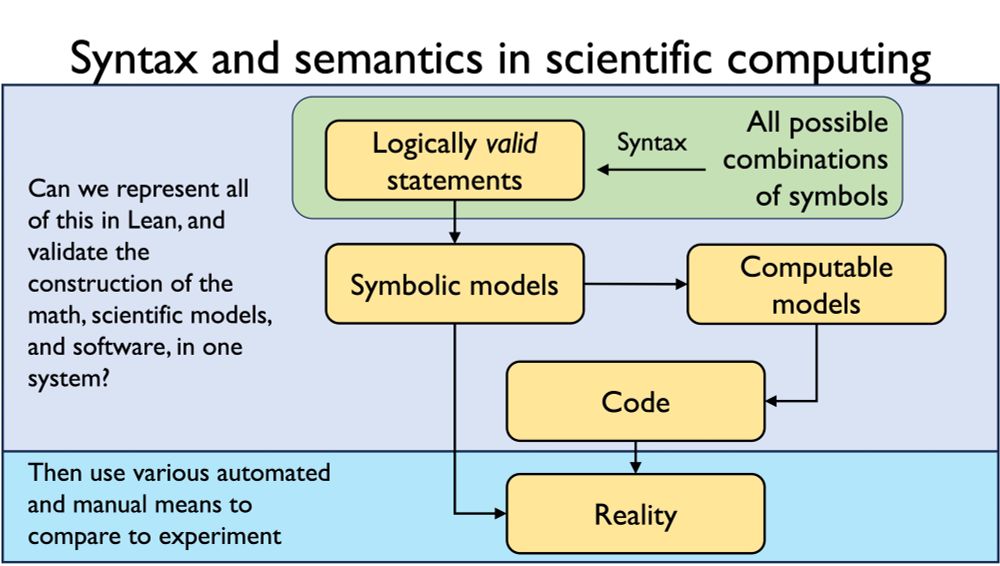
The three overlaid boxes have been replaced with just two: Can we represent all of this in Lean, and validate the construction of the math, scientific models, and software, in one system? Then use various automated and manual means to compare to experiment.
This is one of my favorite slides from Lean for Scientists and Engineers. Traditionally, people imagine new scientific theories, derive them by hand, and implement them in software as best as they can, then compare to experiment. But this is hard, and people can make mistakes along the way!
25.02.2025 16:17 — 👍 8 🔁 1 💬 1 📌 0

Lean for Scientists and Engineers 2024 - YouTube
Lean 4 is a programming language whose type system enables it to check complicated math proofs. This ~22-hour lecture series is an introduction to Lean for n...
Instead, could we validate the construction of math, scientific models, and software in one system? With Lean 4's ability to unify proofs and programs, we can! (This is from Lecture 3: check out the course here! youtube.com/playlist?lis...)
25.02.2025 16:09 — 👍 0 🔁 0 💬 0 📌 0
Very accessible! Definitely sharing this with my students.
04.02.2025 19:20 — 👍 2 🔁 0 💬 0 📌 0

INTRODUCTION
Modern-Day Oracles or Bullshit Machines?
Jevin West (@jevinwest.bsky.social) and I have spent the last eight months developing the course on large language models (LLMs) that we think every college freshman needs to take.
thebullshitmachines.com
04.02.2025 16:12 — 👍 2502 🔁 933 💬 168 📌 229
New game posted on Lean Game Server: Reasoning. ~ Jad Abou Hawili. adam.math.hhu.de#/g/jadabouha... #ITP #LeanProver
28.01.2025 11:47 — 👍 5 🔁 3 💬 0 📌 0
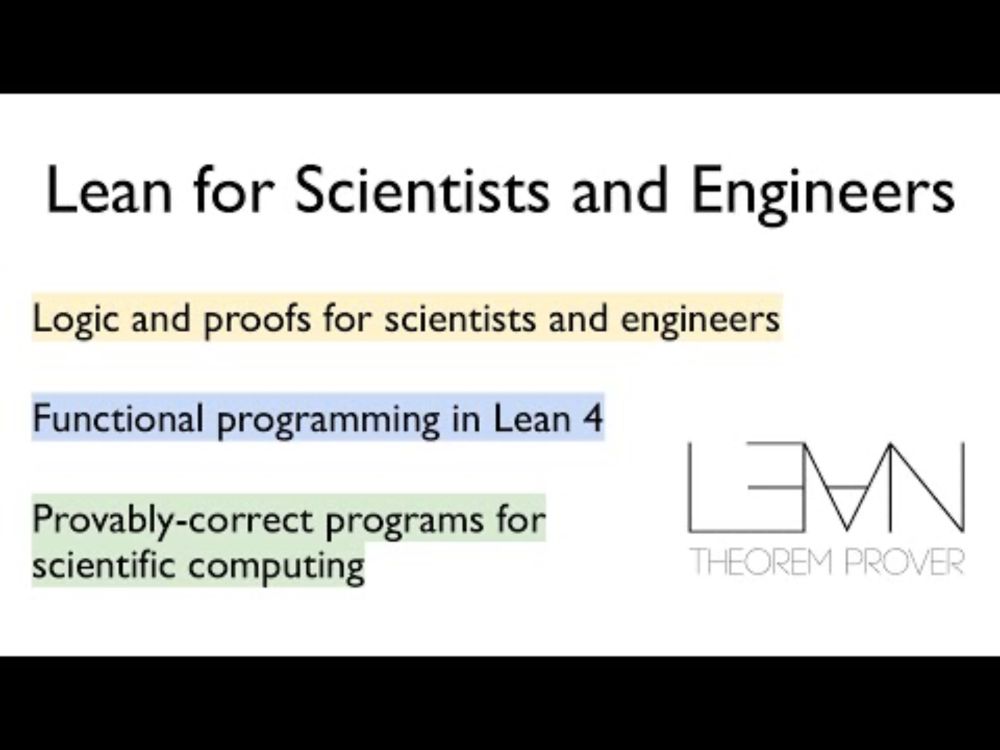
Lean for Scientists and Engineers 2024 - YouTube
Lean 4 is a programming language whose type system enables it to check complicated math proofs. This ~22-hour lecture series is an introduction to Lean for n...
I've uploaded a few more lectures on Lean for Scientists and Engineers: youtube.com/playlist?lis...
Lectures 2-4 cover how to write proofs in Lean to reason about equalities, inequalities, and basic logic (and, or, implies, exists, etc.), and illustrate with examples in science and engineering.
23.01.2025 18:10 — 👍 1 🔁 0 💬 0 📌 0
diffuse.one
andrew white's blog.
I've been thinking about how reasoning models will change AI applied to science. The recent papers from Deepseek/AI2/MoonShotAI are showing that we can exceed humans on reasoning tasks and I've written up some reflections on the consequences
diffuse.one/p/d1-007
21.01.2025 17:32 — 👍 24 🔁 6 💬 0 📌 1
YouTube video by Tyler Josephson
Lean for Scientists and Engineers, Summer 2024 - Lecture 1
Interested in learning a new programming language that enables you to prove the code you've written is correct?
I taught "Lean for Scientists and Engineers" in Summer 2024. Soon, we'll have all the lectures on YouTube! Here's the first one: www.youtube.com/watch?v=s9Dy...
06.01.2025 05:49 — 👍 2 🔁 0 💬 1 📌 0
We’re working on this! Just kicked off the DARPA SciFy project last week: 5 teams building AIs and 1 team making novel, challenging benchmarks. Expect major progress in the next year. www.darpa.mil/research/pro...
17.12.2024 03:30 — 👍 1 🔁 0 💬 0 📌 0
I’d like to join!
09.12.2024 02:17 — 👍 1 🔁 0 💬 1 📌 0
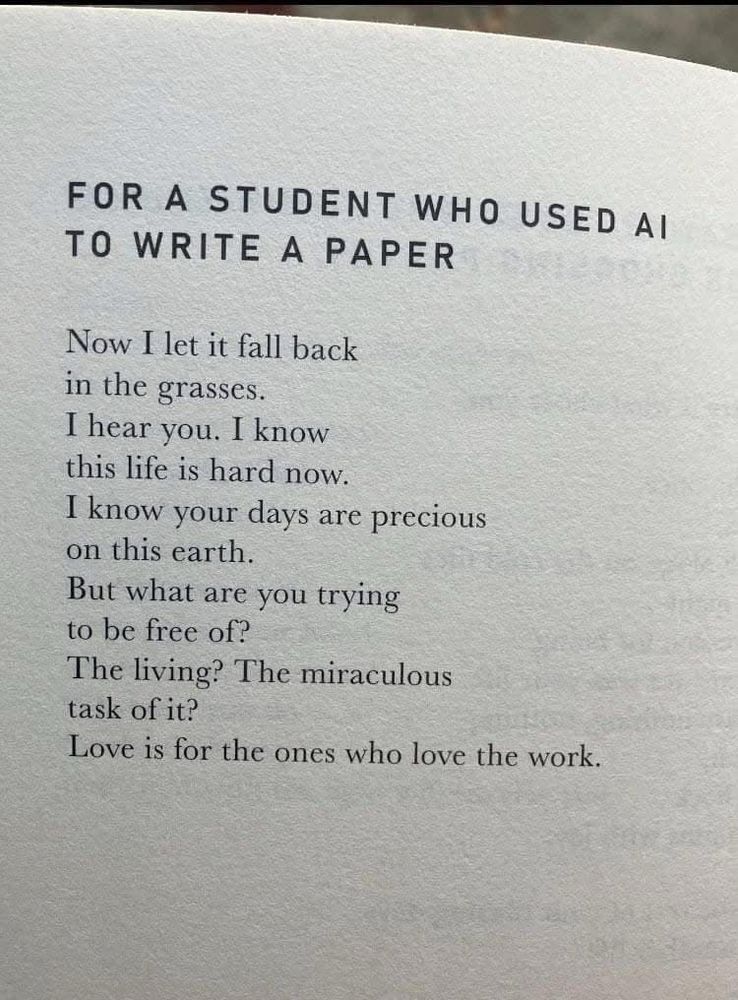
Poem by Joseph Fasano
29.11.2024 20:57 — 👍 9016 🔁 1154 💬 109 📌 69
Cosmologist, pilot, author, connoisseur of cosmic catastrophes. TEDFellow, CIFAR Azrieli Global Scholar. Domain verified through my personal astrokatie.com website. She/her. Dr.
Personal account; not speaking for employer or anyone else.
Recently a principal scientist at Google DeepMind. Joining Anthropic. Most (in)famous for inventing diffusion models. AI + physics + neuroscience + dynamical systems.
Research Scientist @DeepMind | Previously @OSFellows & @hrdag. RT != endorsements. Opinions Mine. Pronouns: he/him
We are a research institute investigating the trajectory of AI for the benefit of society.
epoch.ai
I'm a mathematical physicist who likes explaining stuff. Sometimes I work at the Topos Institute. Check out my blog! I'm also a member of the n-Category […]
[bridged from https://mathstodon.xyz/@johncarlosbaez on the fediverse by https://fed.brid.gy/ ]
Cognitive scientist working at the intersection of moral cognition and AI safety. Currently: Google Deepmind. Soon: Assistant Prof at NYU Psychology. More at sites.google.com/site/sydneymlevine.
A project to digitalize physics into the interactive theorem prover lean 4.
Account for news related to the project. Run by: Joseph Tooby-Smith.
Assistant Professor EPFL | Laboratory for the Chemistry of Materials and Manufacturing | 🇸🇬 | random thoughts about science,🥏, OP👒, and life in🇨🇭
Computational chemist in the @grimmelab.bsky.social @ @unibonn.bsky.social working on QM developments and novel digital solutions. Before w/ @merckgroup.bsky.social
The official Bluesky feed of McSweeney's Quarterly Concern, McSweeney's Internet Tendency, & McSweeney's Books.
.
physician-scientist, author, editor
https://www.scripps.edu/faculty/topol/
Ground Truths https://erictopol.substack.com
SUPER AGERS https://www.simonandschuster.com/books/Super-Agers/Eric-Topol/9781668067666
Junior Research Group Leader at Universität Jena
I like exploring the unknown 🔭🔬🤖✨
AI for Science, Quantum Optics (Theory & Experiment)
Discover our #openaccess journals devoted to the application and development of #MachineLearning and #ArtificialIntelligence for the sciences, health, earth and engineering.
ML Series: https://bit.ly/3FUYyNe
AI for Science: https://bit.ly/3QZlflu
Menswear writer. Editor at Put This On. Words at The New York Times, The Washington Post, The Financial Times, Esquire, and Mr. Porter.
If you have a style question, search:
https://dieworkwear.com/ | https://putthison.com/start-here/
Cheminformatician, developer, climber, runner, hiker, cook
ORCID: 0000-0001-6279-4481

